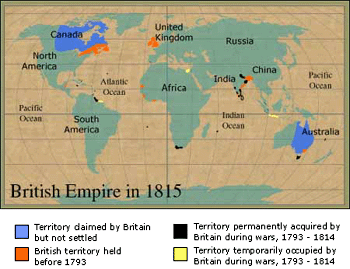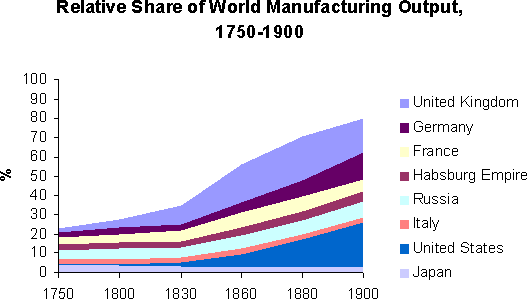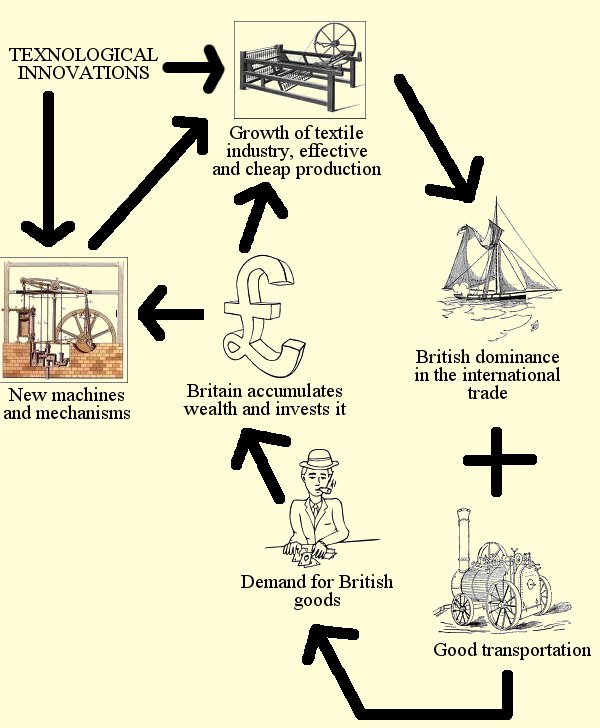Class 14. England in the Eighteenth Century. Industrial Revolution
Acts of Union 1707
In 1707, the Parliaments of England and Scotland passed a pair of acts which joined the Kingdom of England and the Kingdom of Scotland (ruled by one monarch since 1603 as separate states) into a single Kingdom of Great Britain.

The first Union flag. Note that the cross of St.Patrick
is not yet present.
On 1 May 1707, the Scots Parliament and the English Parliament united to form the Parliament of Great Britain, based in the Palace of Westminster in London, the home of the English Parliament.
Although Scotland lost its independent status, the economic benefits were huge, as Scots received access to huge markets of England and its growing colonial posessions, as well as to its foreign traade. In a while, Glasgow would grow into the second city in the British Empire.
In 1999, the Scottish Parliament was re-established, although it has much less authority than its predecessor three centuries earlier. As Scotland remains a part of the United Kingdom, the Scottish Parliament has only power to make laws in Scotland that do not contradict to the laws passed by the UK Parliament in London and has no power in such spheres as, e.g., defence and foreign affairs.
Colonial power
By the first half of the eighteenth century, Britain had colonies in North America and in the Caribbean (so-called West Indies), as well as few forts in Africa and India.
The Seven Years' War of 1756-1763 saw a first ever global conflict between Great Britain and France finished with the victory of the former. As the result, France ceded to Britain a part of its American territories (future Canada) and control over India.
Although Britain lost Thirteen American colonies after their War of Independence (1775-1783), with its colonial posessions in Canada, the Caribbean, India (the Crown Jewel of the British Empire), as well as new territories in Australia, New Zealand and Oceania, during the eighteenth century Britain became the global colonial power.

Blue and orange colours of this map show British colonial posessions in the late eighteenth century, after the loss of the Thirteen Colonies.
Industrial Revolution
During the second half of the eighteenth century, the Industrial Revolution began in Great Britain which would completely transform at first the European civilization and then the whole world. As such, almost every aspect of the contemporary life is influenced by it in some way.

The diagram demonstrates the share of the British industry in the world industrial output. The effects of the Industrial Revolution are clearly seen in the rapid growth of the Britain's share since the late 18th century.
Due to the dramatic decrease in the industrial production and the British dominance in the world trade, Britain during the late eighteenth and particularly ninteenth centuries was called the Workshop of the World.
Another diagram shows you the logics of the Industrial Revolution:
